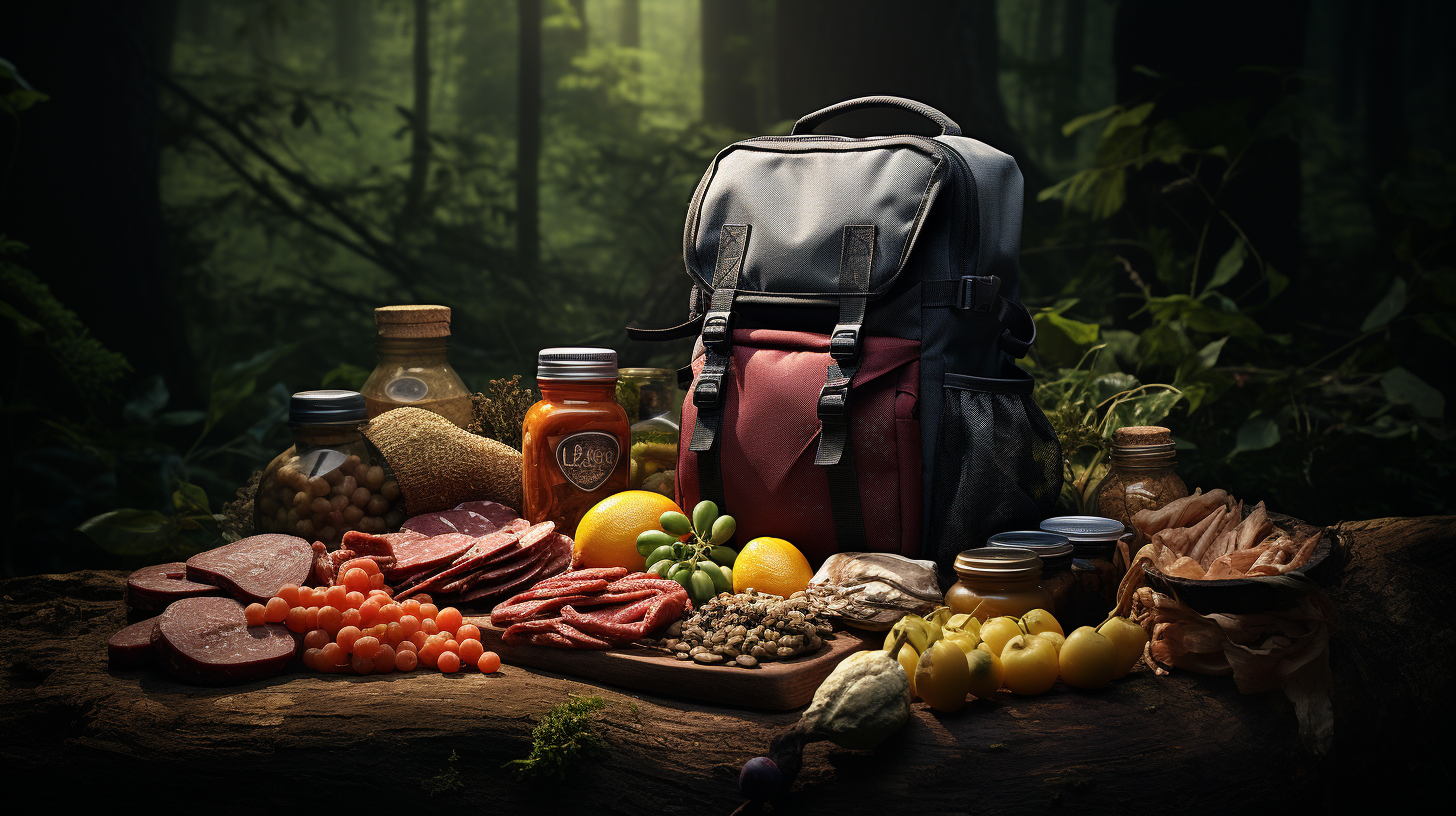You’re preparing for the unexpected, but you’re unsure what to stock up on.
You need nourishing, long-lasting foods to sustain you in an emergency. Don’t worry!
We’ve compiled a list of the best survival foods.
From freeze-dried favorites to essential food storage tips, we’ve got you covered.
So sit back, relax, and let’s dive into the world of survivalist cuisine together.
emergency food supply list
When you’re creating an emergency food supply list, it’s crucial to include items like canned goods, dried fruits, and whole-grain crackers that’ll last for a long period without refrigeration. Peanut butter is another essential item to consider due to its high content of healthful fats and protein. It’s also worth noting that most peanut butter brands don’t require refrigeration after opening.
Whole-wheat crackers are a great substitute for bread; they’re especially handy when making sandwiches. However, due to their higher fat content, their shelf life may be shorter than plain crackers. To prolong their freshness, consider vacuum-packing them.
Don’t forget about nuts and trail mixes as well! They’re perfect high-energy snacks that are both healthy and convenient during emergencies. Do look out for vacuum-packed containers which help prevent oxidation and loss of freshness.
Cereal is another good option. Opt for multigrain cereals that are individually packaged so they don’t become stale after opening. Also choose cereals with minimal added sugar but high fiber content – this helps keep you feeling full longer.
Granola bars or power bars can be your go-to portable snack as they usually stay fresh for at least six months. They offer an excellent source of carbohydrates providing energy without the need to consume large amounts of food.
Lastly, remember canned proteins like tuna, salmon or chicken along with vegetables and beans which provide essential nutrients in a pinch. Canned soups and chili can be eaten straight from the can while dry pasta paired with jarred sauces makes a filling meal during emergencies.
food storage
You’re going to need a solid plan for storing your food safely and efficiently. This means ensuring it’s free from moisture, oxygen, sunlight, and is kept at the right temperature.
First off, choose a dedicated storage space that’s free of these harmful elements. Basements and garages may not be the best options due to their susceptibility to moisture. Instead, consider interior closets or rooms.
Moisture provides an ideal environment for bacteria, microorganisms, and fungi. Opt for dehydrated foods with low moisture content to minimize humidity exposure. Additionally, remember that oxygen shortens the lifespan of stored food. Plan on using sealed containers like airtight mylar bags or jars for your storage needs. Consider utilizing oxygen absorbers in dry foods; these small packets contain iron and salt which soak up oxygen prolonging food longevity.
Avoid direct sunlight as it can degrade essential qualities in your foodstuffs; darker locations are preferable. In fact, back in old West times, general stores often used darker glass containers during shipping to protect contents from sunlight.
Temperature control is crucial as fluctuating temps can spoil food quickly; aim for cooler conditions if possible. Lastly but importantly, think about securing your pantry against theft – desperate times could lead to desperate actions by others.
As you embark on this journey of long-term food storage planning, bear in mind that one of the easiest ways to start is by bulk purchasing items you know your family will consume regularly from grocery sales. Making your storage area part of everyday family life helps embed its importance into routine habits while keeping stock levels fresh through continuous replenishment.
freeze drying food at home
It’s quite simple to freeze-dry food at home, and there are several methods you can use depending on the equipment available. You might already have everything you need right now! This process is a fantastic way to ensure your survival food lasts longer, preserving its nutritional value while making it lighter and more compact for storage.
Here’s a step-by-step guide for each method:
- Freeze Dry in a Freeze-Dryer
- Place your foods in the trays — make sure they don’t exceed the tray’s height.
- Put the trays in the dryer and close the doors.
- Freeze Dry with a Freezer
- Spread out your food on a tray or plate.
- Pop that into your freezer – it needs to be as cold as possible.
- Let it stay there until completely freeze-dried – about two to three weeks.
- Pack it tightly in an air-tight bag before storing.
- Freeze Dry Using Dry Ice
- Pack your food into freezer-safe bags first.
- Then place them inside a cooler covered with dry ice for about 24 hours.
Each of these steps has been designed to be straightforward and easy-to-follow. Remember, don’t rush; let nature do its work. Once completed, store appropriately, whether that’s back in your freezer or tucked away safely in your pantry.
Now isn’t that simpler than you thought? Go ahead, give freeze-drying at home a try!
What 5 foods can you survive on?
We’re focusing on five foods that could sustain you in a survival situation: potatoes, kale, trail mix, grains, and beans. Each food item is not just a source of calories but also provides essential nutrients necessary for your survival.
Potatoes are packed with carbs and other vital nutrients like vitamin C and potassium. You can easily store them for long periods without refrigeration. Kale offers an abundance of vitamins A, K and C along with a good amount of fiber and calcium – crucial for maintaining bone health.
Trail mix is an excellent source of energy due to its high-fat content from nuts while the dried fruits provide quick sugars. Grains like rice or oats offer complex carbohydrates that keep you feeling full longer. Lastly, beans are protein powerhouses providing much-needed muscle building materials.
Here’s a brief overview:
| Food Type | Nutrients | Storage |
|---|---|---|
| Potatoes | Carbs, Vitamin C & Potassium | No Refrigeration Required |
| Kale | Vitamins A,C,K & Calcium | Dry Storage Needed |
| Trail Mix | High Energy Fats & Sugars | Sealed Container |
| Grains (Rice/Oats) | Complex Carbs | Cool & Dry Place |
| Beans | Protein | Store Dried or Canned |
Remember to properly store these items to ensure their longevity. With these foods on your survival menu, you’d have the necessary energy and nutrients for endurance during emergencies. However, don’t forget water! Dehydration is equally dangerous as malnutrition in survival situations. Now that you’re equipped with this knowledge; plan wisely!
Conclusion
So, you’ve got your emergency food list and your storage sorted. You also have a handle on freeze drying at home. Remember the top five survival foods: beans, rice, peanut butter, broth cubes, and canned fruit. It’s all about being prepared and making smart choices.
With this knowledge under your belt, you’re ready to face any emergency that comes your way. Stay safe and eat wisely!

